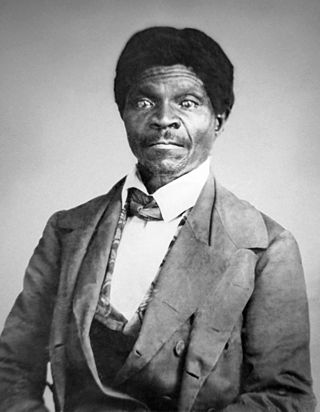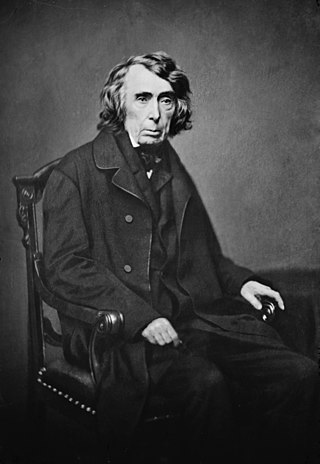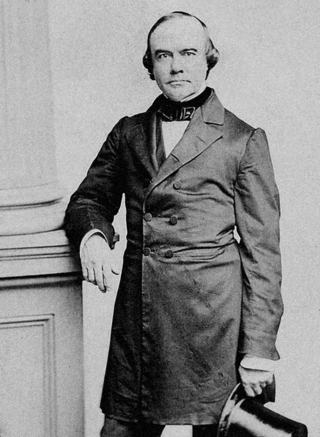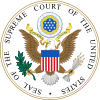Dred Scott v. Sandford, 60 U.S. 393 (1857), was a landmark decision of the United States Supreme Court that held the U.S. Constitution did not extend American citizenship to people of black African descent, and therefore they could not enjoy the rights and privileges the Constitution conferred upon American citizens. The decision is widely considered the worst in the Supreme Court's history, being widely denounced for its overt racism, judicial activism, poor legal reasoning, and crucial role in the start of the American Civil War four years later. Legal scholar Bernard Schwartz said that it "stands first in any list of the worst Supreme Court decisions". A future chief justice, Charles Evans Hughes, called it the Court's "greatest self-inflicted wound".

Dred Scott was an enslaved African American man who, along with his wife, Harriet, unsuccessfully sued for the freedom of themselves and their two daughters, Eliza and Lizzie, in the Dred Scott v. Sandford case of 1857, popularly known as the "Dred Scott decision". The Scotts claimed that they should be granted freedom because Dred had lived in Illinois and the Wisconsin Territory for four years, where slavery was illegal, and laws in those jurisdictions said that slave holders gave up their rights to slaves if they stayed for an extended period.

Ex parte Merryman, 17 F. Cas. 144 (No. 9487), was a controversial U.S. federal court case that arose out of the American Civil War. It was a test of the authority of the President to suspend "the privilege of the writ of habeas corpus" under the Constitution's Suspension Clause, when Congress was in recess and therefore unavailable to do so itself. More generally, the case raised questions about the ability of the executive branch to decline to enforce judicial decisions when the executive believes them to be erroneous and harmful to its own legal powers.

Philip Pendleton Barbour was the tenth speaker of the United States House of Representatives and an associate justice of the Supreme Court of the United States. He is the only individual to serve in both positions.
A number of cases were tried before the Supreme Court of the United States during the period of the American Civil War. These cases focused on wartime civil liberties, and the ability of the various branches of the government to alter them. The following cases were among the most significant.

Benjamin Robbins Curtis was an American lawyer and judge who served as an associate justice of the United States Supreme Court from 1851 to 1857. Curtis was the first and only Whig justice of the Supreme Court, and he was the first Supreme Court justice to have a formal law degree. He is often remembered as one of the two dissenters in the Supreme Court's infamous 1857 decision Dred Scott v. Sandford.

Noah Haynes Swayne was an American jurist and politician. He was the first Republican appointed as a justice to the United States Supreme Court.

John Archibald Campbell was an American jurist. He was a successful lawyer in Georgia and Alabama, where he served in the state legislature. Appointed by Franklin Pierce to the United States Supreme Court in 1853, he resigned at the beginning of the American Civil War, traveled south and became an official of the Confederate States of America. After serving six months in a military prison at war's end, he secured a pardon and resumed his law practice in New Orleans, where he also opposed Reconstruction.

The Marshall Court refers to the Supreme Court of the United States from 1801 to 1835, when John Marshall served as the fourth Chief Justice of the United States. Marshall served as Chief Justice until his death, at which point Roger Taney took office. The Marshall Court played a major role in increasing the power of the judicial branch, as well as the power of the national government.

The Chase Court refers to the Supreme Court of the United States from 1864 to 1873, when Salmon P. Chase served as the sixth Chief Justice of the United States. Chase succeeded Roger Taney as Chief Justice after the latter's death. Appointed by President Abraham Lincoln, Chase served as Chief Justice until his death, at which point Morrison Waite was nominated and confirmed as his successor.

The inauguration of James Buchanan as the 15th president of the United States was held on Wednesday, March 4, 1857, at the East Portico of the United States Capitol in Washington, D.C. This was the 18th inauguration and marked the commencement of the only four-year term of both James Buchanan as president and John C. Breckinridge as vice president. Chief Justice Roger B. Taney administered the presidential oath of office. This was the first inauguration ceremony known to be photographed.

John Catron was an American jurist who served as an associate justice of the Supreme Court of the United States from 1837 to 1865, during the Taney Court.

Peter Vivian Daniel was an American jurist who served as an associate justice of the Supreme Court of the United States.

Robert Cooper Grier was an American jurist who served on the Supreme Court of the United States.

John McLean was an American jurist and politician who served in the United States Congress, as U.S. Postmaster General, and as a justice of the Ohio and U.S. Supreme Courts. He was often discussed for the Whig Party nominations for president, and is also one of the few people who served in all three branches of government.

Samuel Nelson was an American attorney and appointed as judge of New York State courts. He was appointed as a Justice of the Supreme Court of the United States, serving from 1845 to 1872. He concurred on the 1857 Dred Scott decision, although for reasons different from Chief Justice Taney's.

Roger Brooke Taney was an American lawyer and politician who served as the fifth chief justice of the United States, holding that office from 1836 until his death in 1864. Taney infamously delivered the majority opinion in Dred Scott v. Sandford (1857), ruling that African Americans could not be considered U.S. citizens and that Congress could not prohibit slavery in the U.S. territories. Prior to joining the U.S. Supreme Court, Taney served as the U.S. attorney general and U.S. secretary of the treasury under President Andrew Jackson. He was the first Catholic to serve on the Supreme Court.

James Moore Wayne was an American attorney, judge and politician who served as an Associate Justice of the Supreme Court of the United States from 1835 to 1867. He previously served as the 16th Mayor of Savannah, Georgia from 1817 to 1819 and the member of the United States House of Representatives for Georgia's at-large congressional district from 1829 to 1835, when he was appointed to the Supreme Court by President Andrew Jackson. He was a member of the Democratic Party.

Levi Woodbury was an American attorney, jurist, and Democratic politician from New Hampshire. During a four-decade career in public office, Woodbury served as Associate Justice of the Supreme Court of the United States, a United States Senator, the ninth governor of New Hampshire, and cabinet member in the Andrew Jackson and Martin Van Buren administrations. He was promoted as a candidate for the Democratic nomination for President of the United States in 1848.





















